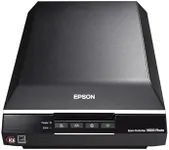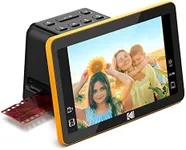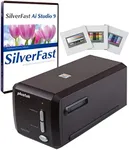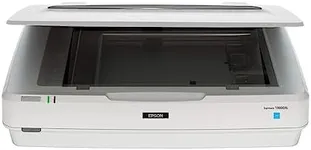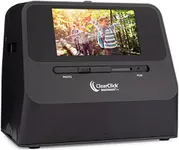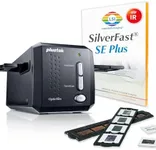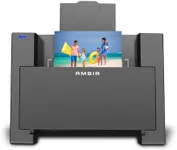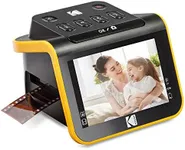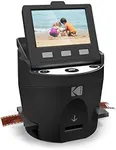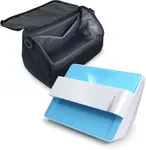Buying Guide for the Best Slide Photo Scanners
Choosing the right slide-photo scanner can be a game-changer for preserving and digitizing your precious memories. When selecting a scanner, it's important to consider various specifications that will impact the quality and ease of your scanning experience. Understanding these key specs will help you make an informed decision that best suits your needs.ResolutionResolution refers to the number of pixels that the scanner can capture, typically measured in dots per inch (DPI). Higher resolution means more detail and clarity in the scanned images. If you plan to print large photos or need high-quality digital images, look for scanners with higher DPI, such as 4800 DPI or more. For general use and sharing online, a lower resolution like 2400 DPI may suffice.
Color DepthColor depth indicates the number of colors the scanner can reproduce, usually measured in bits. Higher color depth, such as 48-bit, provides more accurate and vibrant colors, which is crucial for preserving the true colors of your slides and photos. If color accuracy is important to you, opt for scanners with higher color depth. For basic scanning needs, 24-bit color depth might be adequate.
Scanning SpeedScanning speed is the time it takes for the scanner to digitize an image, often measured in seconds per scan. Faster scanning speeds can save you time, especially if you have a large collection of slides and photos to digitize. If you need to scan many images quickly, look for scanners with higher scanning speeds. For occasional use, slower speeds may be acceptable.
ConnectivityConnectivity options determine how the scanner connects to your computer or other devices. Common options include USB, Wi-Fi, and Bluetooth. USB connections are reliable and fast, while Wi-Fi and Bluetooth offer wireless convenience. Choose a scanner with connectivity options that match your setup and preferences. If you prefer a clutter-free workspace, wireless options might be ideal.
Software CompatibilitySoftware compatibility refers to the scanner's ability to work with various operating systems and image editing software. Ensure the scanner is compatible with your computer's operating system (Windows, macOS, etc.) and any software you plan to use for editing and organizing your scanned images. Compatibility with popular software can enhance your scanning experience and workflow.
Film HolderA film holder is a device that holds slides and negatives in place during scanning. Quality film holders ensure that your slides and photos are properly aligned and protected. Look for scanners with sturdy and adjustable film holders, especially if you have different sizes of slides and negatives. This feature is important for achieving accurate and consistent scans.
Dust and Scratch RemovalDust and scratch removal is a feature that automatically cleans up imperfections in your scanned images. This can save you time and effort in post-processing. If your slides and photos are old or have visible damage, choose a scanner with advanced dust and scratch removal capabilities. This will help you achieve cleaner and more professional-looking scans.
